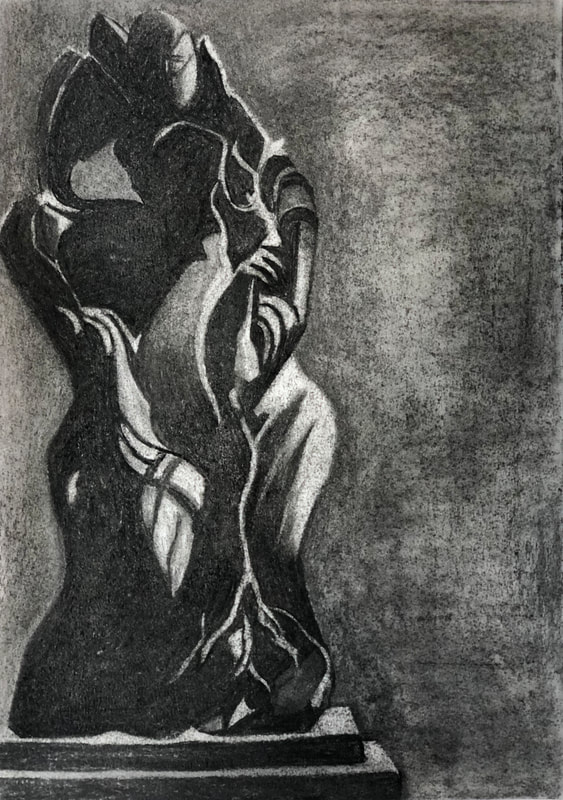|
We invite you to engage with the work of our resident artists by visiting The Fragile Power of Drawing - a virtual residency exhibition, presented as part of the 2020/21 Drawing Research Program. Join Dipali as she shares her research from her studio in Malaysia, while virtually transporting us to the Paris studio-museums through this Q&A series with curator Rahma Khazam. What attracted you to Ossip Zadkine's sculptures of Venus? Venus is the goddess of love in Roman mythology. Ossip Zadkine’s sculptures of Venus encouraged me to investigate perceptions of love, its connotation as goddess in our current society and the relationship of love with sexuality. My own art practice incorporates some of these explorations. Through the materiality of sex toys which I associate as a symbol of female sexual liberation, my art deliberates notions of female sexuality and female sexual pleasure. I was curious to explore re-interpretations of the goddess of love just like Zadkine had done in his time with his expertise. When one thinks of the Birth of Venus one cannot help but think of the creation by the famous Italian artist Sandro Botticelli in 1480s. The colourful painting representing the goddess of love arriving to shore, in full nudity flanked by Zephyr, the god of wind on one side and the goddess (hora) of spring on the other. Zadkine’s Birth of Venus is very dissimilar to this original representation. Zadkine as a sculptor casts his representation in bronze. The change in medium from painting to sculpture brings about a shift in forms and textures. The artist’s interpretation of the idea based on the strength of his skill and the conviction of owning his concept despite the limitations that he may encounter inspired me to attempt several versions of my own. Donna Haraway ends her essay, The Cyborg Manifesto with the line “… I would rather be a cyborg than a goddess.” Here she is referring to the idea of women existing in the world as cybernetic assemblages of human and machine in order to subvert global androcentric mechanisms. This tension between becoming cyborg which is an integral part of my art practice and the goddess of love which has been extensively decoded by famous artists attracted me to reinterpret Zadkine’s Venus. These are two almost opposite approaches to drawing. One is a more figurative charcoal drawing, while the second is more abstract and experimental. Could you explain this contrast and relation between the two?
What is special about drawing for you?
In today’s fast paced virtual lifestyle, Drawing allows me to slow down and move slowly through time bringing me into the present in both mind and body. It creates space for me to observe intently and transpose my interpretations onto paper. The movements of the hands are different as compared to the constant typing on the keyboard, a refreshing break from mundane virtuality. The feel of materials on the dermis of my palms and the marks created through gestures and movements feel far more satisfying than the constricted sitting postures performed in front of cold blue LED screen of my laptop. There is also a special feeling drawing with machines (referring to my vibrator drawings). It is like action drawing where the control is limited, and a lot is left to chance. The end result is not more important than the process of creating the work. It is performative in nature as the movement of body in fusion with the device creates marks that are open to interpretation, breaking conventions and creating space for new imaginations. About Dipali Gupta Visit the exhibition online for more video and text conversations with the participating artists.
0 Comments
Leave a Reply. |
keep in Touch!News and resources shared on this community platform are meant to further the engagement, stimulate active thinking, and create pathways for knowledge transfer and cross-cultural exchange. Archives
July 2024
CategoriesCover Image: L'AiR Arts residents, Multidisciplinary Program, January 2020
|



 RSS Feed
RSS Feed